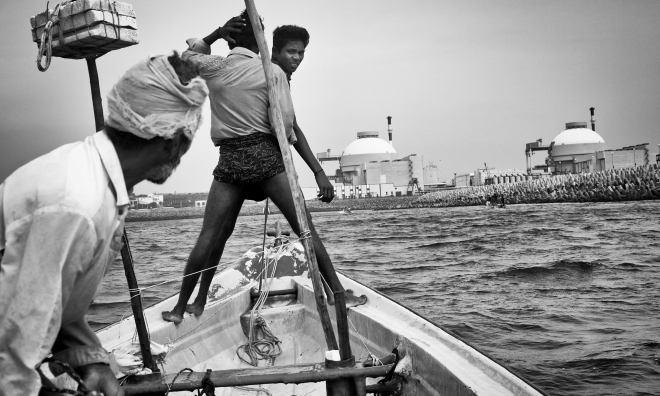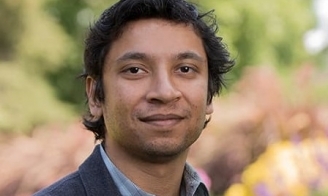Rahul Mukherjee - Radiant Infrastructures
Sensing Urban Matter: Fantasies of Seamless Interoperability

Image: Amirtharaj Stephen
The 3rd event in the series of four weekly online talks Fantasies of Seamless Interoperability.
The talks are organized by the Future Architecture fellows – Hanna Husberg and Agata Marzecova (the art-science collaborative Towards Atmospheric Care), and explore how collective environmental and social imaginaries, hopes, and fantasies are shaped through invisible, yet material and very influential, infrastructure and novel ecosystems emerging at the nexus of political economy, communication technologies and the atmospheric medium in its role as a carrier of the electromagnetic spectrum.
Cell towers and nuclear reactors, like railways and hydroelectric dams, have often been credited as bringing development and progress. But unlike dams and railways, infrastructures like cell antennas and atomic power plants emit radiant energies in the form of electromagnetic signals and radioactive rays. For outward demonstrations of radiance (electrical illumination and information communication), internal operations in nuclear reactors and cell antennas involve invisible processes that scatter radioactive particles and spread electromagnetic rays. Radiant infrastructures as a conceptual heuristic, folds in both these glittering and impalpable aspects of radiance. It is important to go beyond theorizing radiant infrastructures as specific objects, and consider their uncertain environmental (and health) effects along with the wider environments (including air) that the radiation emissions permeate through. Studying radiant infrastructures involves transcending visible light to account for other waves in the electromagnetic spectrum. The uncertain effects of spectral exchanges between infrastructural emissions and human bodies (that mediate radiation) is crucial to theorizing radiant infrastructures. In particular, the talk navigates across phenomenologies of exposure, autonomy, sensitivity, sensing and (wireless) saturation through analysis of case-studies from several regions (India, United States) dealing with biopolitical and infrastructural thresholds.
The talk will take place online on September 29, 2021, at 19:00 EET (GMT +3).
Event LINK
Registration is not compulsory, but if you like to hear from us regarding this talks series, please register here: REGISTRATION
The series Fantasies of Seamless Interoperability is part of Architektūros fondas' programme Sensing Urban Matter, which takes place within the Future Architecture platform and European Architecture programme 2021, is co-funded by the Creative Europe Programme of the European Union and a strategic partner Lithuanian Council for Culture. Media partner – Lithuanian national television and radio.

Rahul Mukherjee is Dick Wolf Associate Professor of Television and New Media and Director of the Cinema and Media Studies program at University of Pennsylvania. His research on environmental media and mobile phone cultures has been published in his recent monograph Radiant Infrastructures: Media, Environment, and Cultures of Uncertainty (Duke University Press, 2020) and in journals such as Media, Culture & Society and Asiascape: Digital Asia. Rahul is part of the advisory board of the journal Media + Environment and the Center for Advanced Research in Global Communication.